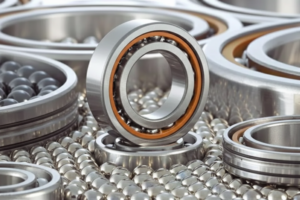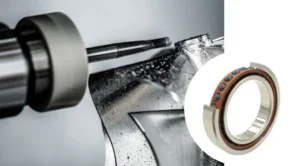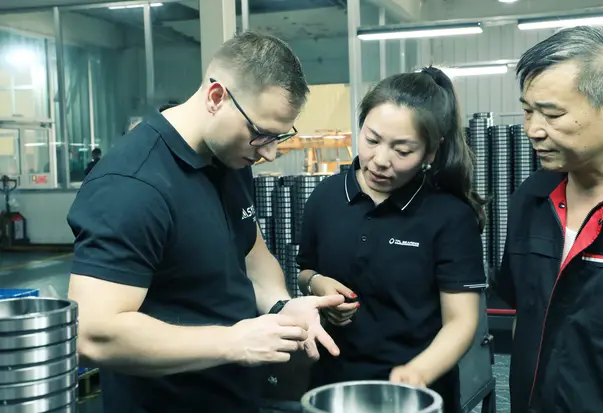Introduction:
Ever wondered how drones stay lightweight or robotic arms move so precisely? The secret often lies in thin section ball bearings – a marvel of engineering that defies traditional design rules.
Let’s break down what makes them special!
What Makes Thin Section Bearings “Thin”?
The Structural Game-Changer
Unlike standard ball bearings, thin section bearings follow a “constant cross-section” principle:
- Standard Bearings: Cross-section (height/width) scales up with bore size.
- Example: A 50mm bore bearing will be much thicker than a 10mm bore version.

- Thin Section Bearings: Cross-section stays the same regardless of bore size.
- A 200mm bore thin bearing can be as slim as a 20mm one!
- Why this matters:
- Saves space in large equipment (e.g., satellite solar panel joints).
- Maintains uniform performance across sizes.

Key Structural Advantages
1. Space Optimization
- A 100mm thin section bearing may be just 5mm thick, whereas a standard bearing of the same bore could be 15mm thick.
- Real-world use: Enables slim medical imaging gantries and collapsible robotics.

2. Weight Reduction
- Thin walls and optimized rolling elements cut weight by 30-50% vs conventional designs.
- Example: Drones using thin section bearings gain 12% longer flight times.
3. Precision Alignment
- Shallow raceways and tightly controlled tolerances reduce runout to <0.001 mm.
- Critical for: Semiconductor manufacturing robots, optical lens mounts.
Material & Manufacturing: Less Is More
(Condensed section – focus on structural synergy) While advanced materials like stainless steel and ceramics enhance durability, the real magic is in how thin section bearings are engineered:
- Deep Groove Design: Distributes stress evenly across thin walls.
- Angular Contact Variants: Use asymmetric raceways to handle combined loads without bulk.
Fun Fact: NASA’s Mars rovers use thin section bearings to keep joints lightweight yet robust in extreme temperatures!
Where Their Unique Design Shines
| Application | Problem Solved by Thin Design |
| Surgical Robots | Fits inside 8mm-diameter robotic arms for minimally invasive surgery. |
| Wind Turbines | Reduces generator hub weight by 25%, lowering energy loss. |
| EV Battery Packs | Allows compact motor integration, freeing space for more battery cells. |
Future Trends: How Thin Can We Go?
Engineers are pushing boundaries with:
- Sub-1mm Cross-Sections: Using carbon fiber composites for high-load micro bearings.
- Kyushu University (Japan, 2021): A CFRP/polyimide micro bearing (0.8mm cross-section) operated at 10,000 rpm for 200 hours under 50N load without failure.
- NASA Glenn Research Center: Tested CFRP micro ball bearings (2mm bore, 0.6mm cross-section) showed 40% higher load capacity in vacuum environments vs. stainless steel counterparts.
- Integrated Sensors: Embedding strain gauges to monitor bearing health in real-time.
Conclusion: Small Design, Big Impact
Thin section ball bearings prove that innovation isn’t always about making things bigger. By rethinking basic principles like cross-section scaling, they unlock new possibilities in robotics, aerospace, and beyond.
Need a Reliable Thin Bearing Partner? → Choose TFL Bearing! We specialize in custom thin section bearings that deliver:
- Bore sizes from 10mm to 500mm with identical cross-sections
- Load-optimized designs for your industry
- ISO-certified precision grinding
Email Us and Get Your Free Design Consultation – Let’s build lighter, smarter machines together!




